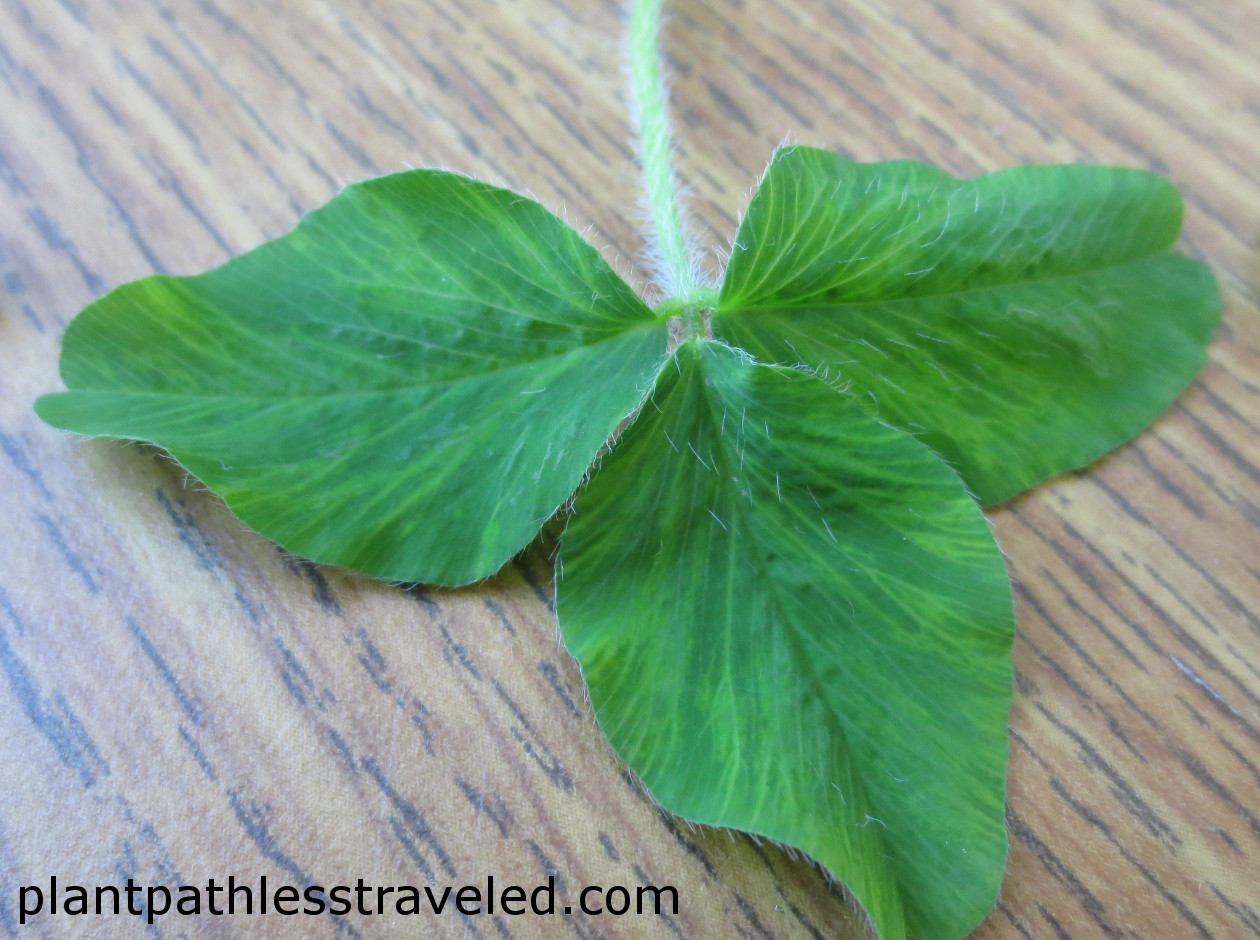Clover yellow mosaic virus
Clover yellow mosaic virus, abbreviated ClYMV, is a filamentous plant virus that can infect clover, Trifolium spp.; Medicago spp.; pea, Pisum sativum; faba bean, Vicia faba; green bean, Phaseolus vulgaris; snapdragon, Antirrhinum majus; and verbena Verbena canadensis (Agrawal et al. 1962; Sit et al. 1990; Baker et al. 2004). The experimental host range (what can be inoculated in the lab) is much larger and includes 10 plant families (Pratt 1961, Hampton et al. 1978, Rao et al. 1980).
CLYMV was first reported to occur in the USA in 1942 and was further characterized in 1962 (Johnson 1942, Agrawal et al. 1962).
ClYMV has a positve sense single stranded RNA genome and is a potexvirus. It can be detected by using antibodies (for Immunosorbant Electron Microscopy, ISEM, or ELISA) or through molecular methods (by reverse transcription polymerase chain reaction, RT-PCR).
Symptoms
In clover and alfalfa ClYMV produces mosaics or leaf streaking. It is also commonly found co-infecting clovers with White Clover Mosaic Virus (Agrawal et al. 1962). In pea ClYMV produces necrotic lesions and mosaic symptoms. ClYMV produces slight symptoms in verbena that include stunting, yellowing, and leaf distortion of young plant leaves (Baker et al. 2004).

Vector
The vector (method of spread) of ClYMV is mechanically through infected sap or through seed.
Control
Seed for planting new clover or alfalfa fields should be tested for ClYMV to minimize the virus from the fields. Due to being spread mechanically, what was originally a small percentage of ClYMV infected clover or alfalfa plants can rapidly increase when the field is mowed or harvested.
Ornamental plants with virus like symptoms growing near symptomatic fields of clover or alfalfa should be tested for viruses to determine if they are infected with ClYMV.
Where can I see this virus?
ClYMV along with White Clover Mosaic Virus can be easily found in red clover and alfalfa that are growing in ditches or other areas. Plants will have streaky leaves and may be stunted.
All photos taken by Sara Bratsch. For non commercial use only.
Please contact regarding all other uses.
Cite this article:
Bratsch, Sara. "Clover yellow mosaic virus". Web article. 24 June 2016. http://plantpathlesstraveled.com/clover-yellow-mosaic-virus/
Citations
Agrawal, H., M. Chessin, and L. Bos. "Purification of clover yellow mosaic virus." (1962): 408-409.
Baker, C. A., K. Beckham, and E. Hiebert. "A virus related to Clover yellow mosaic virus found east of the Mississippi River in Verbena Canadensis in Florida." Plant Disease 88.2 (2004): 223-223.
Ford, Richard E. "Concentration and purification of clover yellow mosaic virus from pea roots and leaves." Phytopathology 63 (1973): 926-930.
Johnson, Folke. The complex nature of white-clover mosaic. Ohio State University, 1942.
Hampton, R., et al. "Host reactions of mechanically transmissible legume viruses of the northern temperate zone." Phytopathology (1978).
Pratt, Michael J. "Studies on clover yellow mosaic and white clover mosaic viruses." Canadian Journal of Botany 39.3 (1961): 655-665.
Rao, D.V., Hiruki, C. and Matsumoto, T. (1980). Phytopath. Z. 98: 260.
Sit, Tim L., et al. "Complete nucleotide sequence of clover yellow mosaic virus RNA." Journal of General Virology 71.9 (1990): 1913-1920.